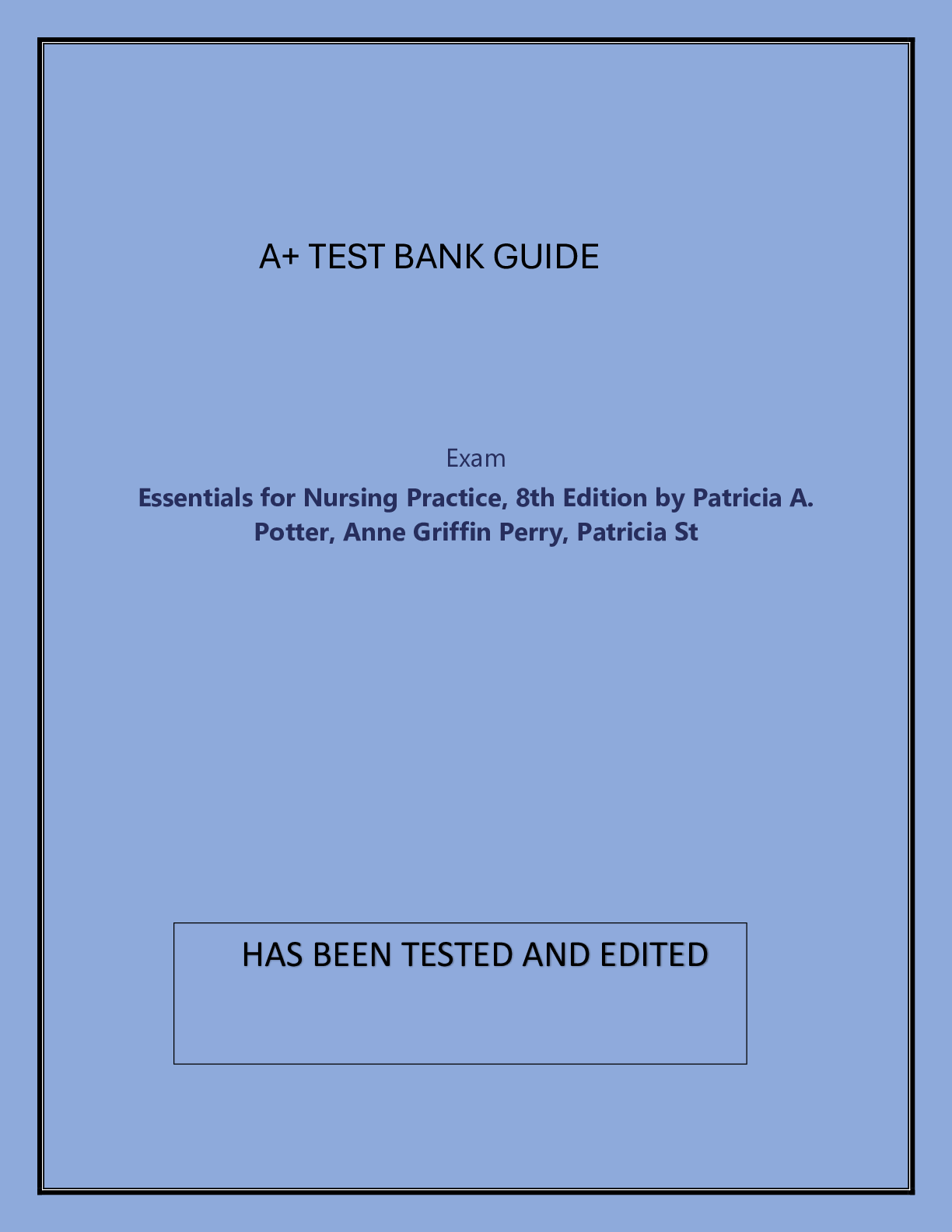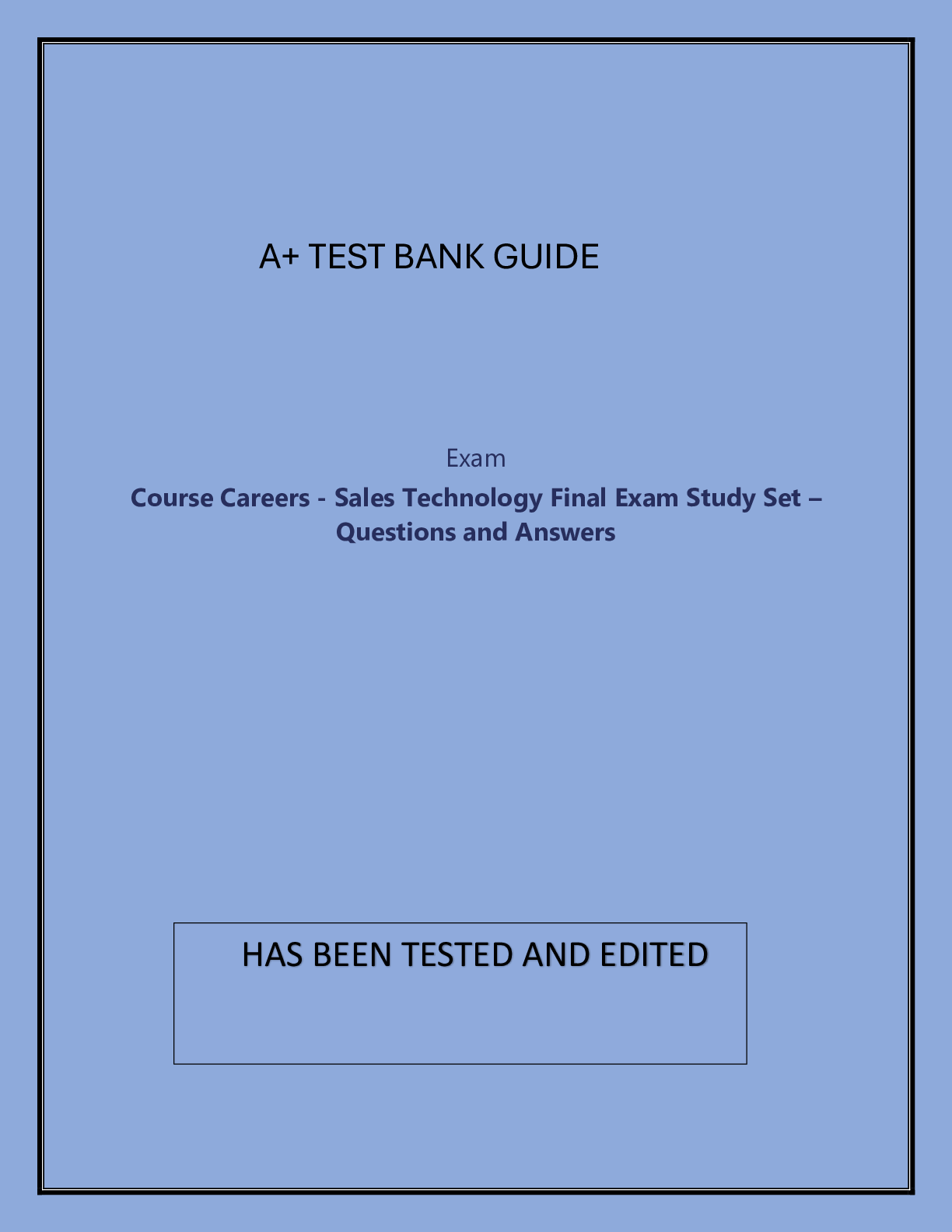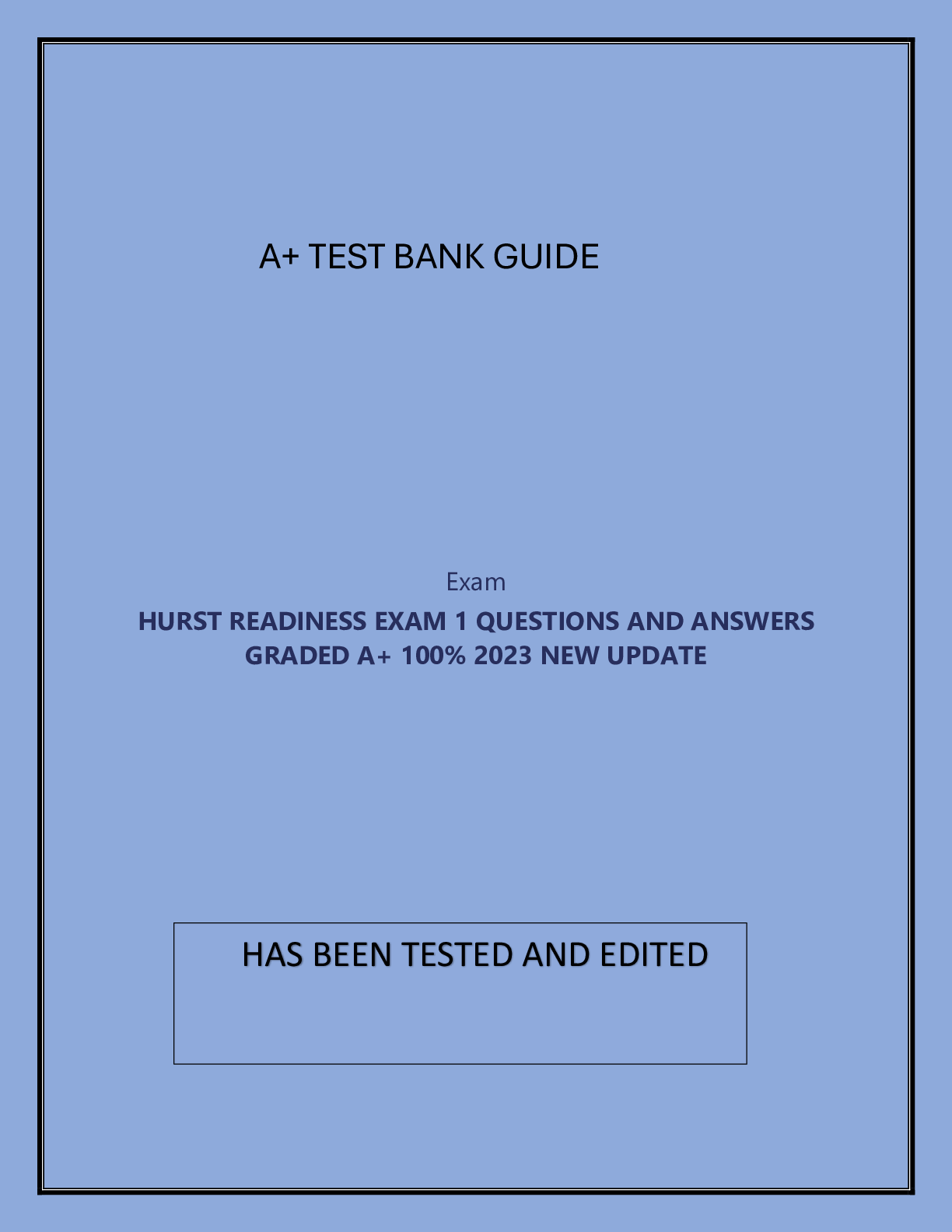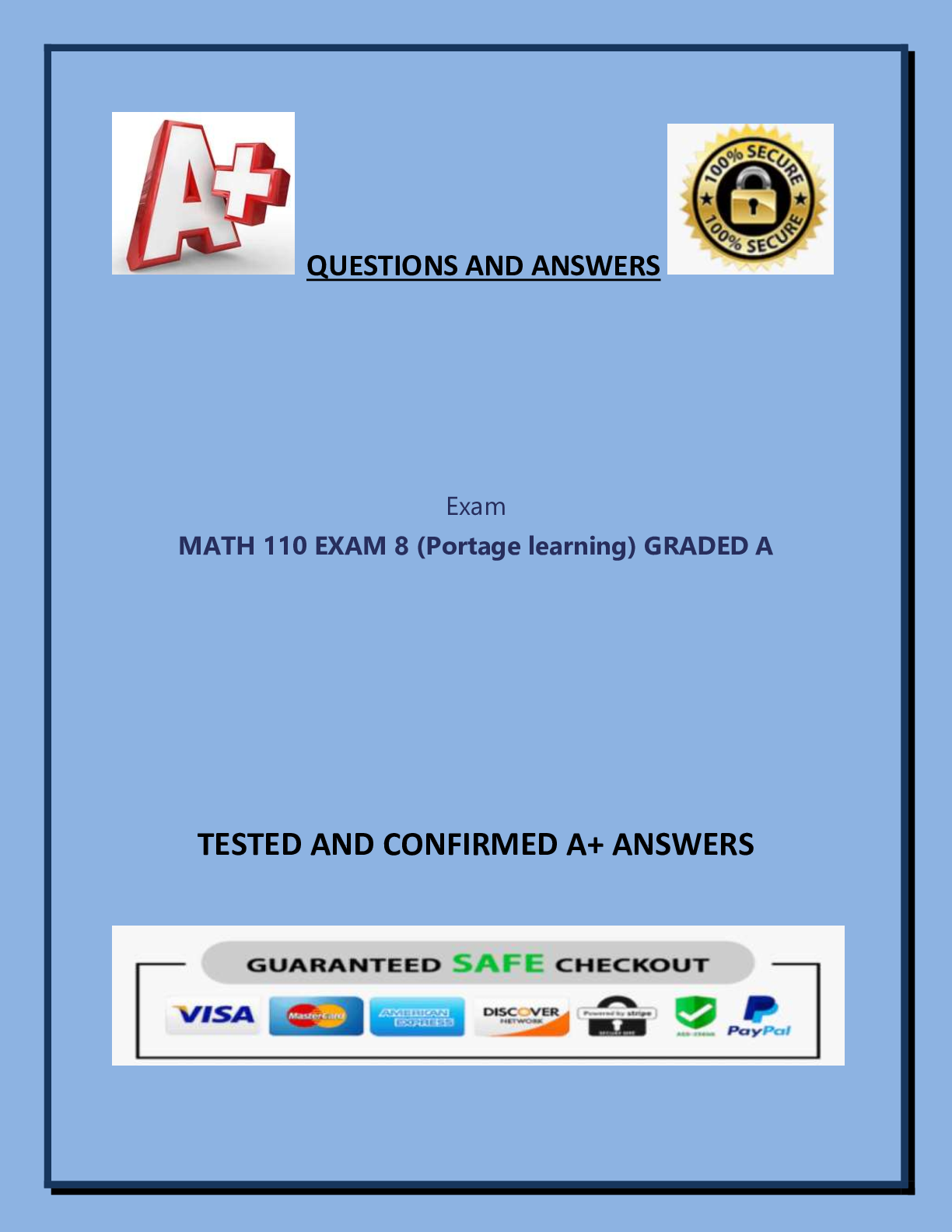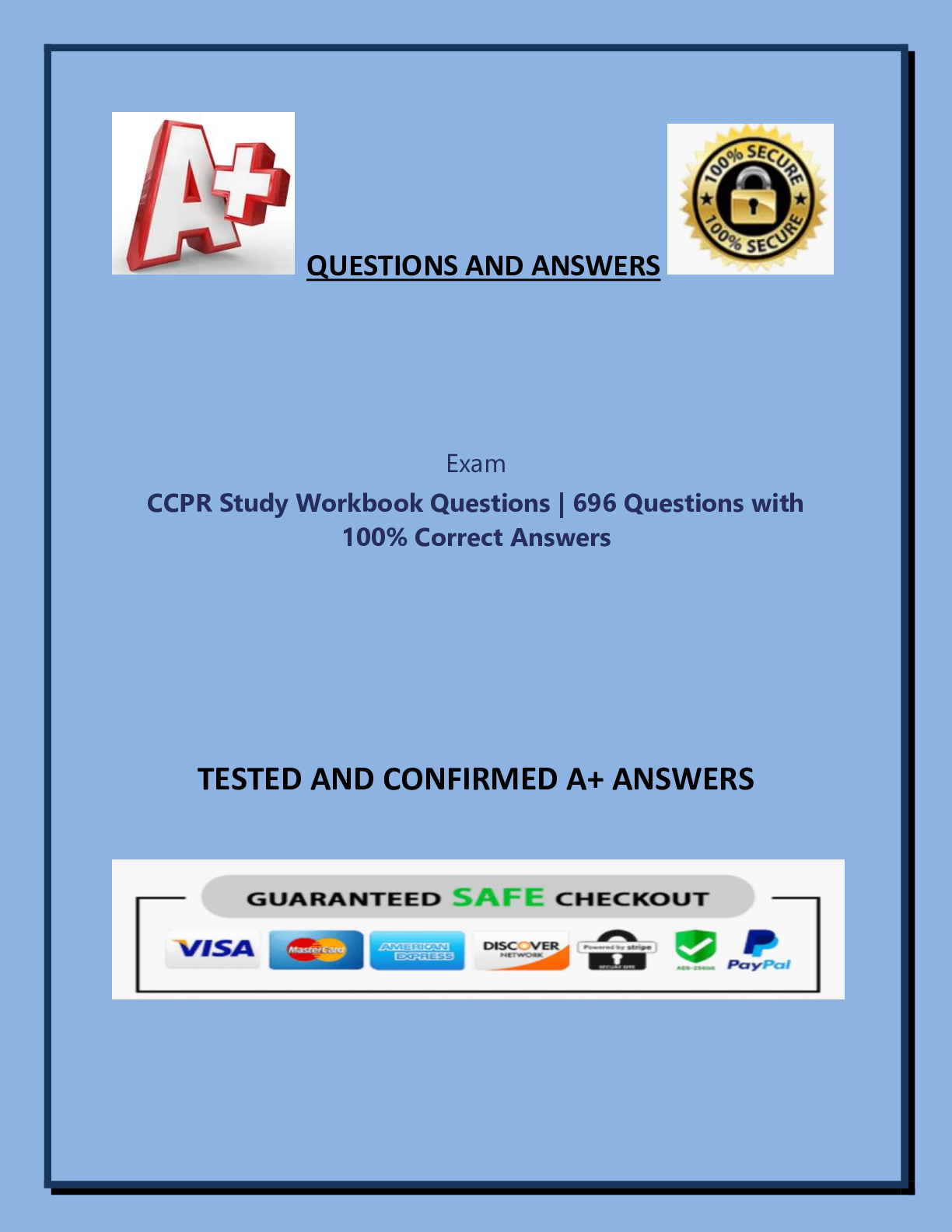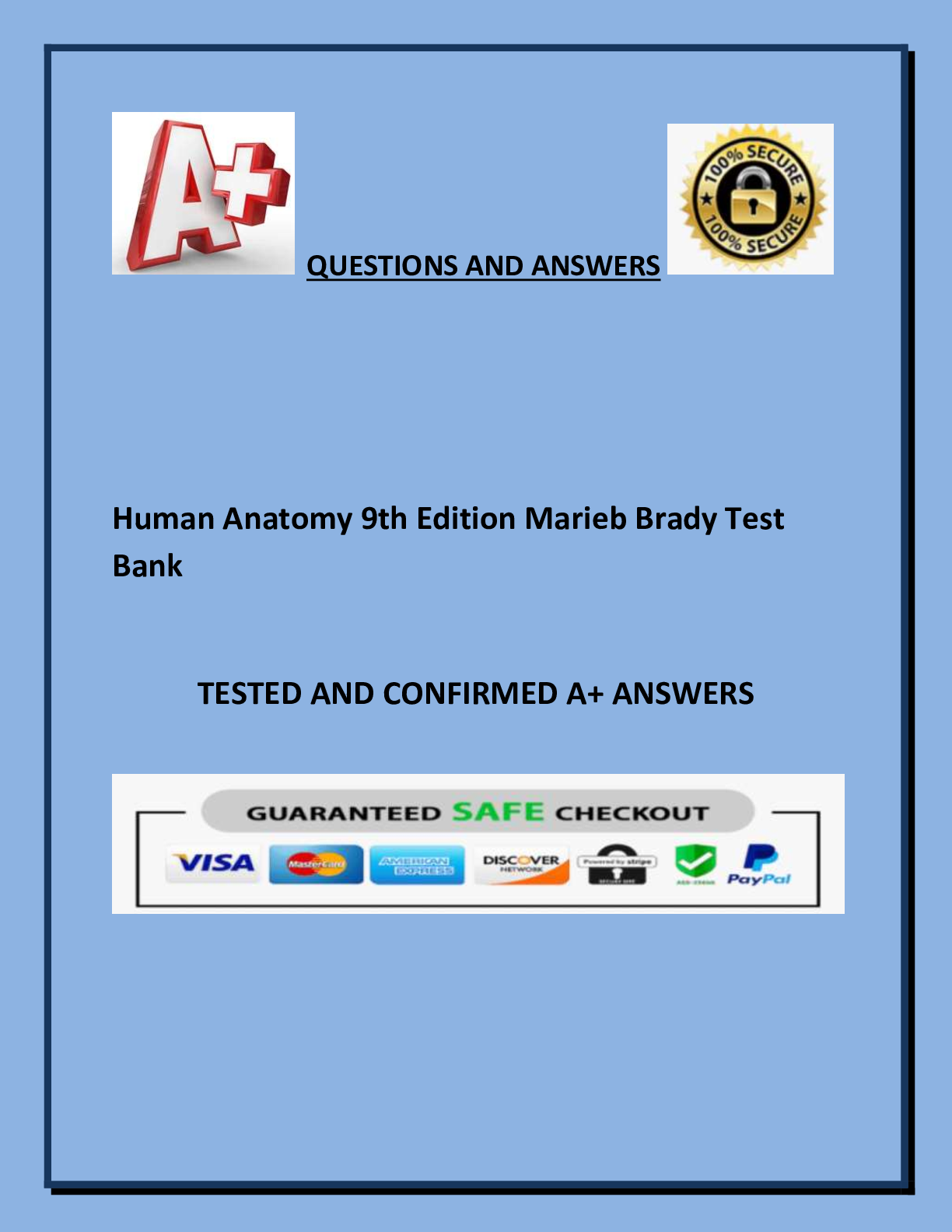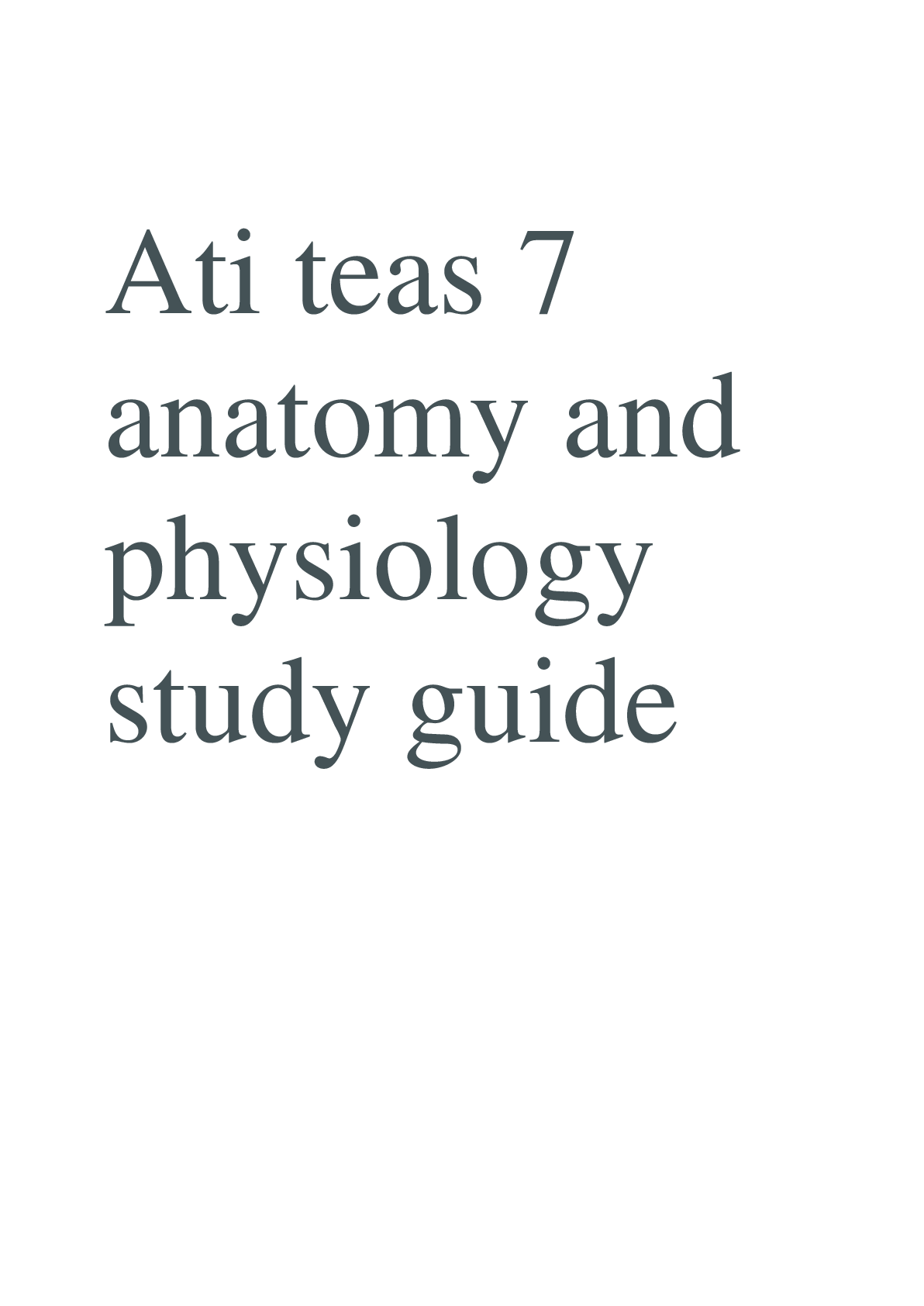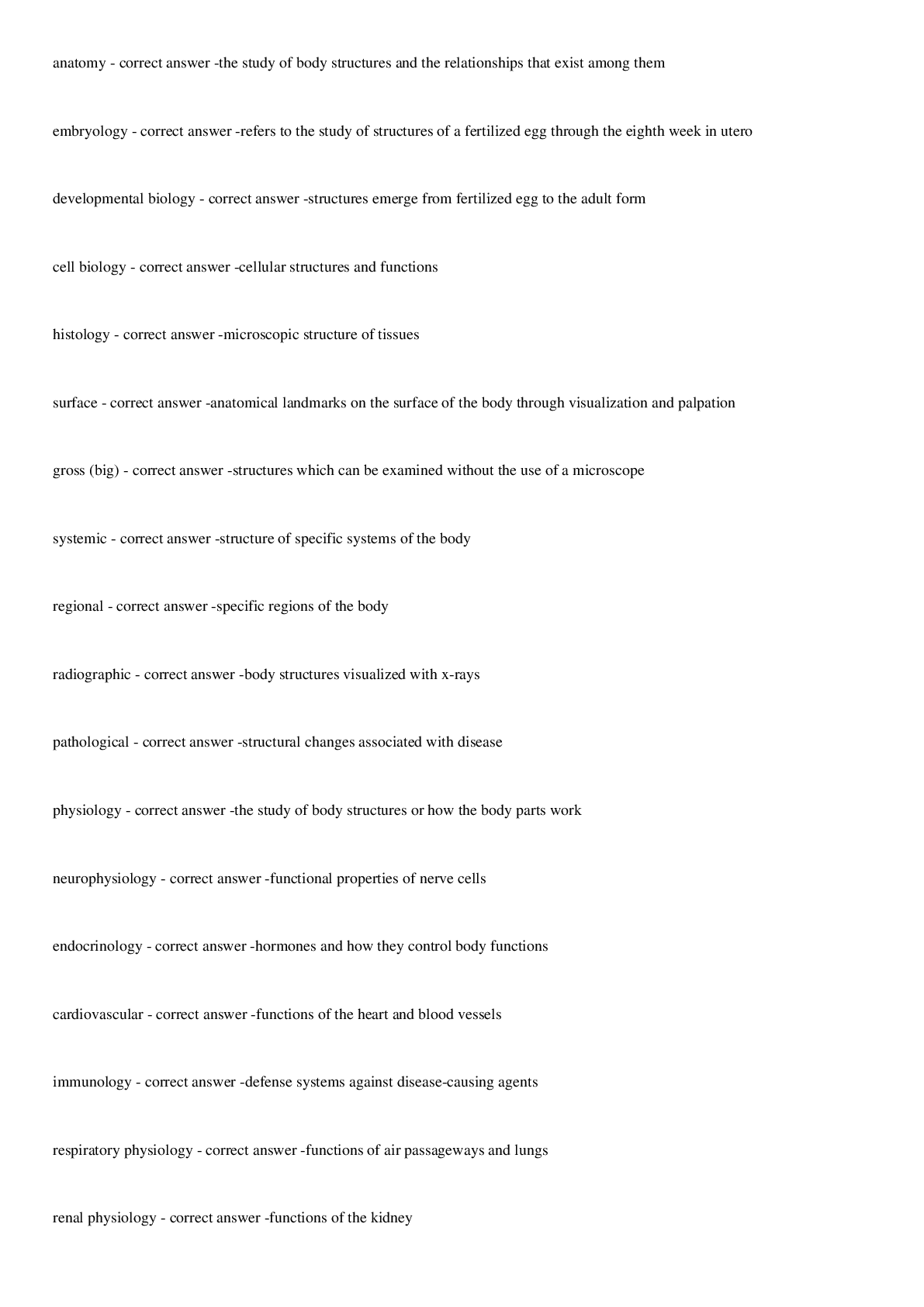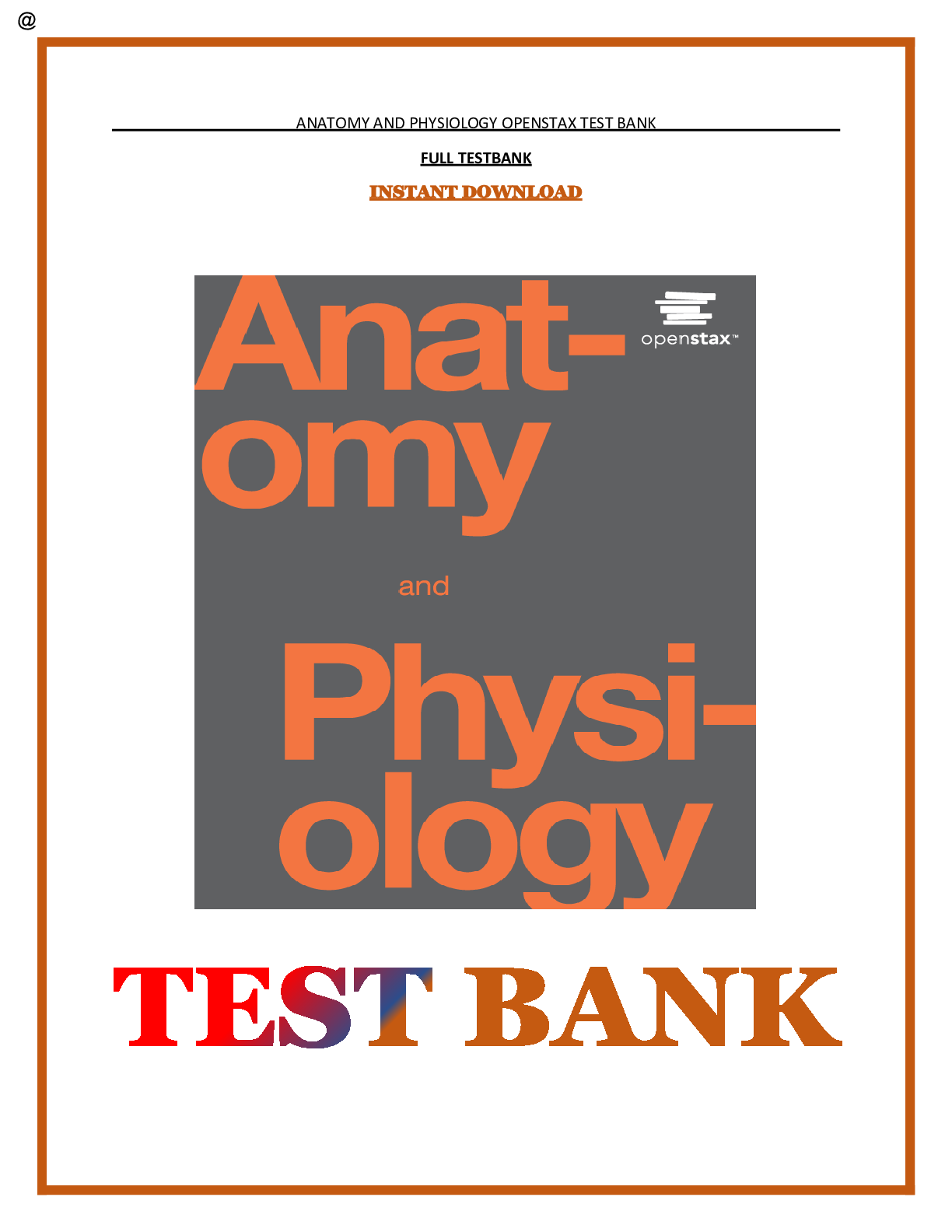*NURSING > A-Level Question Paper > Principles of Anatomy and Physiology 13th Edition (All)
Principles of Anatomy and Physiology 13th Edition
Document Content and Description Below
1) What are the four major elements found in the chemicals that comprise the human body? a) nitrogen, oxygen, calcium, sodium b) hydrogen, carbon, phosphorus, calcium c) carbon, hydrogen, oxygen an... d nitrogen d) oxygen, nitrogen, potassium, calcium e) potassium, phosphorus, sodium, hydrogen Answer: c Difficulty: Easy Learning Objective 1: LO 2.1 Understand how the structures of atoms, ions, molecules, free radicals and compounds are related to the main chemical elements of the human body. Learning Objective 2: LO 2.1.1 Identify the main chemical elements of the human body. Section Reference 1: 2.1 How Matter is Organized 2) The three types of subatomic particles that are important for understanding chemical reactions in the human body are a) neutrons, quarks, and muons. b) protons, neutrons, and electrons. c) muons, positons, and neutrons. d) electrons, quarks, and protons. e) positons, protons, and neutrons. Answer: b Difficulty: Easy Learning Objective 1: LO 2.1 Understand how the structures of atoms, ions, molecules, free radicals and compounds are related to the main chemical elements of the human body. Learning Objective 2: LO 2.1.2 Describe the structures of atoms, ions, molecules, free radicals, and compounds. Section Reference 1: 2.1 How Matter is Organized [Show More]
Last updated: 1 year ago
Preview 1 out of 47 pages
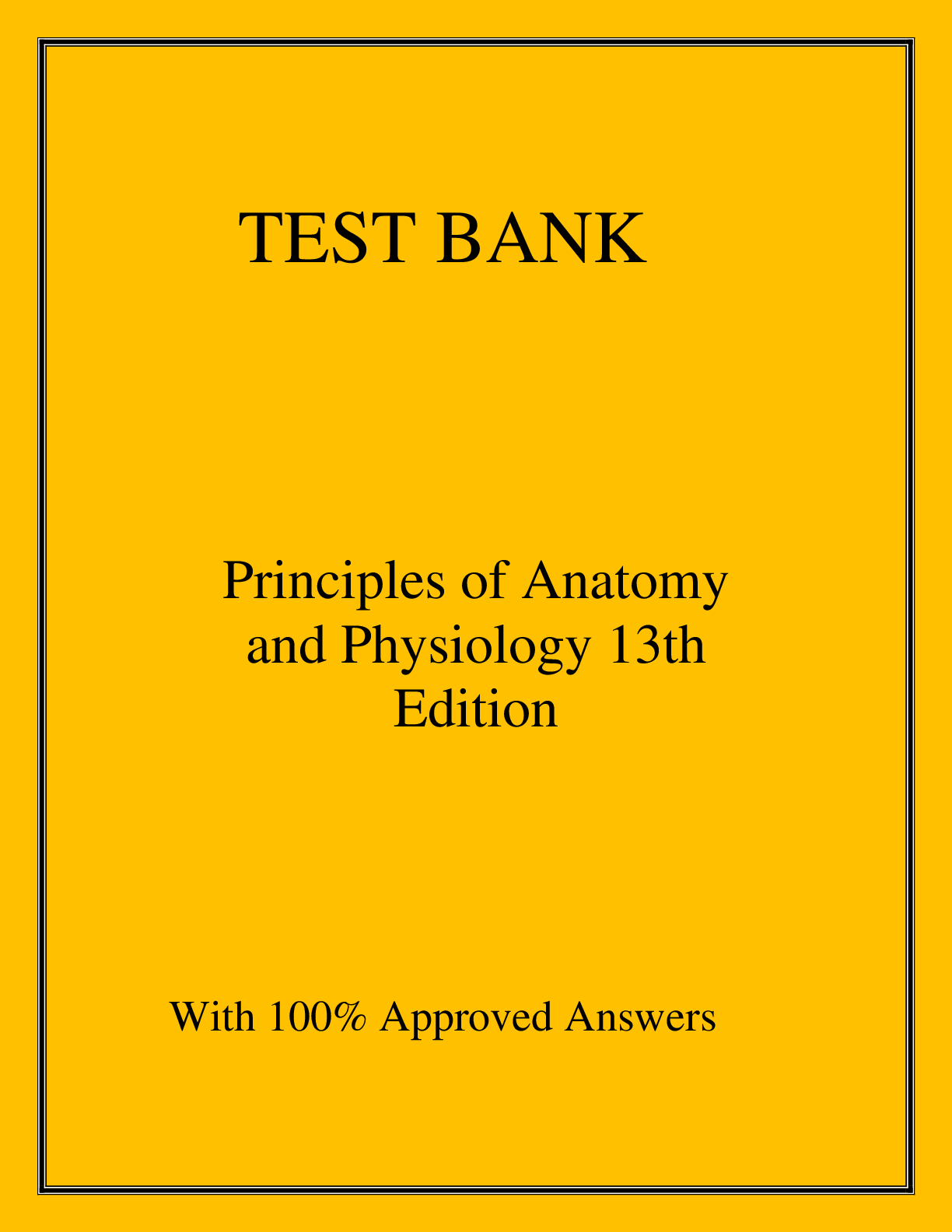
Buy this document to get the full access instantly
Instant Download Access after purchase
Buy NowInstant download
We Accept:

Reviews( 0 )
$19.00
Can't find what you want? Try our AI powered Search
Document information
Connected school, study & course
About the document
Uploaded On
Oct 27, 2023
Number of pages
47
Written in
Additional information
This document has been written for:
Uploaded
Oct 27, 2023
Downloads
0
Views
81

